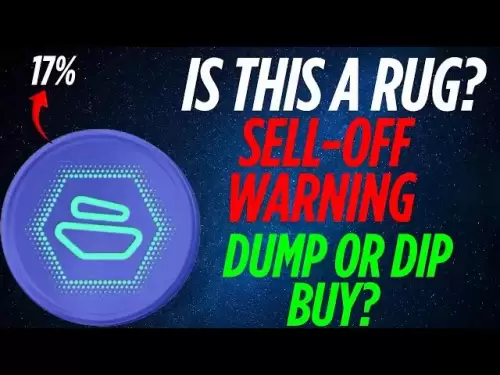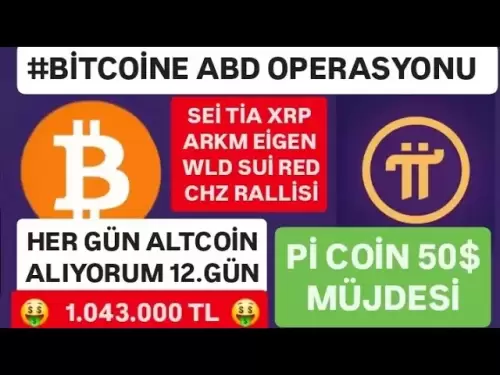-
 Bitcoin
Bitcoin $107,810.8710
-1.45% -
 Ethereum
Ethereum $2,531.4386
-1.75% -
 Tether USDt
Tether USDt $1.0000
-0.03% -
 XRP
XRP $2.2542
-0.99% -
 BNB
BNB $659.1350
-0.50% -
 Solana
Solana $148.5456
-2.40% -
 USDC
USDC $0.9999
-0.02% -
 TRON
TRON $0.2868
-0.44% -
 Dogecoin
Dogecoin $0.1666
-3.65% -
 Cardano
Cardano $0.5751
-2.36% -
 Hyperliquid
Hyperliquid $37.6845
-5.51% -
 Bitcoin Cash
Bitcoin Cash $494.9448
-0.65% -
 Sui
Sui $2.8396
-3.31% -
 Chainlink
Chainlink $13.2423
-2.59% -
 UNUS SED LEO
UNUS SED LEO $9.0482
0.02% -
 Stellar
Stellar $0.2467
-2.44% -
 Avalanche
Avalanche $17.8165
-3.63% -
 Shiba Inu
Shiba Inu $0.0...01158
-2.41% -
 Toncoin
Toncoin $2.7397
-3.42% -
 Hedera
Hedera $0.1560
-2.73% -
 Litecoin
Litecoin $85.8559
-2.34% -
 Monero
Monero $315.3710
-2.30% -
 Dai
Dai $1.0001
0.00% -
 Polkadot
Polkadot $3.3443
-2.03% -
 Ethena USDe
Ethena USDe $1.0001
0.01% -
 Bitget Token
Bitget Token $4.2888
-3.73% -
 Uniswap
Uniswap $7.3388
-1.57% -
 Aave
Aave $278.2986
-3.05% -
 Pepe
Pepe $0.0...09807
-3.67% -
 Pi
Pi $0.4563
-2.39%
How much will the customized requirements for blockchain system development increase costs?
Complexity, integration, security, customization, scalability, and team expertise all contribute to the high costs of blockchain development.
Apr 17, 2025 at 07:56 pm
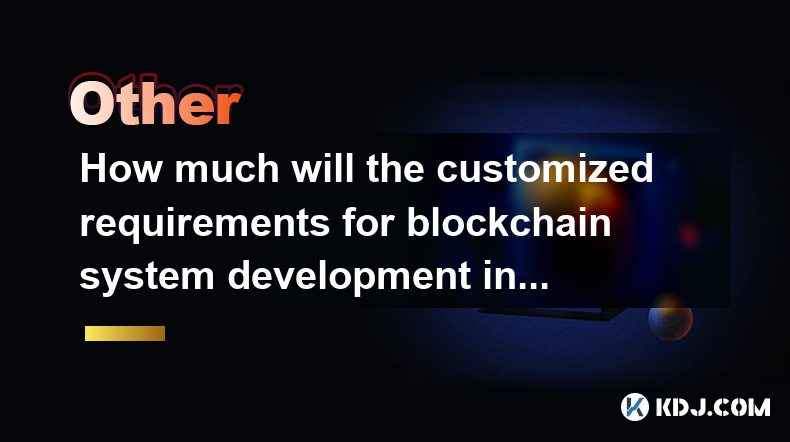
Developing a blockchain system involves various customized requirements that can significantly impact the overall cost. Understanding these factors and their effects on the budget is crucial for any organization planning to implement a blockchain solution. This article delves into the key elements that can increase costs in blockchain system development and provides insights into managing these expenses effectively.
Complexity of the Blockchain Architecture
The complexity of the blockchain architecture is a primary factor that can drive up costs. A simple blockchain designed for basic transaction recording will be less expensive than a more sophisticated system that includes features like smart contracts, multiple consensus mechanisms, or integration with other technologies. For instance, a blockchain that needs to handle high transaction volumes and ensure low latency might require a more robust and hence costlier infrastructure.
When designing the architecture, developers must consider the scalability, security, and interoperability requirements. Each of these elements adds layers of complexity, which in turn increases the development time and costs. A highly customized blockchain architecture tailored to specific business needs can be significantly more expensive than a generic, off-the-shelf solution.
Integration with Existing Systems
Integration with existing systems is another crucial aspect that can elevate the cost of blockchain development. Many organizations already have established IT infrastructures, and integrating a new blockchain system with these existing systems can be challenging and costly. This integration often requires custom APIs, middleware, and sometimes even a complete overhaul of the existing systems to ensure seamless communication and data flow.
For example, if a company wants to integrate its blockchain with an existing ERP system, it might need to develop custom connectors or modify the ERP system to be blockchain-compatible. This process involves not only technical development but also extensive testing to ensure that the integration does not disrupt existing operations. The more complex the existing systems and the more extensive the integration required, the higher the costs will be.
Security and Compliance Requirements
Security and compliance requirements are non-negotiable in blockchain development, especially for industries like finance and healthcare. Implementing high-level security measures, such as advanced encryption, multi-signature wallets, and robust authentication protocols, can significantly increase development costs. Additionally, ensuring compliance with regulations like GDPR, HIPAA, or KYC/AML can require additional development efforts and specialized expertise.
Security audits and penetration testing are essential to identify and mitigate vulnerabilities, but these services come at a cost. Compliance with various regulatory frameworks might also necessitate the involvement of legal experts, further adding to the expenses. The more stringent the security and compliance requirements, the more resources will be needed to meet them, thus increasing the overall cost of the blockchain system.
Customization of Smart Contracts
Customization of smart contracts is another area where costs can escalate. Smart contracts are self-executing contracts with the terms of the agreement directly written into code. While basic smart contracts can be relatively inexpensive to develop, highly customized smart contracts that need to handle complex logic, multiple conditional statements, and integration with external data sources can be much more costly.
Developing and testing these custom smart contracts requires skilled developers with expertise in programming languages like Solidity or Rust. Additionally, the more complex the smart contract, the more time and resources are needed for thorough testing to ensure that it functions correctly and securely. This customization can significantly increase the development time and, consequently, the costs.
Scalability and Performance Enhancements
Scalability and performance enhancements are critical for blockchain systems that need to handle large volumes of transactions or operate at high speeds. Achieving high scalability and performance often requires advanced techniques such as sharding, off-chain transactions, or layer-2 solutions. These techniques are complex and can significantly increase the development costs.
For instance, implementing sharding involves dividing the blockchain into smaller, more manageable parts to increase transaction throughput. This requires sophisticated development and extensive testing to ensure that the system remains secure and functional. Similarly, off-chain transactions and layer-2 solutions require additional infrastructure and development efforts, all of which contribute to higher costs.
Development Team Expertise and Size
The expertise and size of the development team also play a significant role in determining the cost of blockchain development. Hiring experienced blockchain developers, especially those with expertise in specific areas like smart contract development or consensus algorithms, can be expensive. The more specialized the skills required, the higher the salaries and consulting fees will be.
Additionally, the size of the development team can impact costs. A larger team might be necessary for complex projects with tight deadlines, but it also means higher payroll expenses. Balancing the need for skilled developers with budget constraints is crucial for managing costs effectively.
FAQs
Q1: Can using open-source blockchain platforms reduce the cost of development?
A1: Yes, using open-source blockchain platforms like Ethereum or Hyperledger can reduce development costs. These platforms provide a foundational framework that can be customized to meet specific needs, potentially saving time and resources compared to building a blockchain from scratch. However, the extent of customization required will still impact the overall cost.
Q2: How does the choice of consensus mechanism affect development costs?
A2: The choice of consensus mechanism can significantly impact development costs. For example, Proof of Work (PoW) is more resource-intensive and complex to implement than Proof of Stake (PoS) or Delegated Proof of Stake (DPoS). The more complex the consensus mechanism, the more development time and expertise are required, leading to higher costs.
Q3: Are there any ongoing costs associated with maintaining a blockchain system?
A3: Yes, there are ongoing costs associated with maintaining a blockchain system. These include costs for node operation, regular security updates, compliance monitoring, and potential upgrades or enhancements to the system. The complexity of the blockchain and the level of customization will influence these ongoing expenses.
Q4: How can organizations manage and potentially reduce the costs of blockchain development?
A4: Organizations can manage and potentially reduce the costs of blockchain development by clearly defining their requirements, prioritizing features, and starting with a minimum viable product (MVP). Utilizing open-source platforms, outsourcing certain development tasks to specialized firms, and continuously monitoring and optimizing the development process can also help control costs.
Disclaimer:info@kdj.com
The information provided is not trading advice. kdj.com does not assume any responsibility for any investments made based on the information provided in this article. Cryptocurrencies are highly volatile and it is highly recommended that you invest with caution after thorough research!
If you believe that the content used on this website infringes your copyright, please contact us immediately (info@kdj.com) and we will delete it promptly.
- Ethereum, Exchanges, and Price Resilience: Navigating the Crypto Landscape
- 2025-07-08 08:30:13
- Bitcoin's NVT Golden Cross: Is a Local Top Brewing?
- 2025-07-08 09:10:11
- Semler Scientific's Bitcoin Bonanza: A Cryptocurrency Goal?
- 2025-07-08 09:10:11
- From Coin Flips to Cityscapes: How Names, Parks, and Planting Shaped St. Albert
- 2025-07-08 08:50:12
- Candles, Laundromats, and Inspiration: A Surprising New York Story
- 2025-07-08 09:15:11
- Iron Maiden Rocks the Royal Mint: A 50th Anniversary Coin That Kicks Ass
- 2025-07-08 09:15:11
Related knowledge
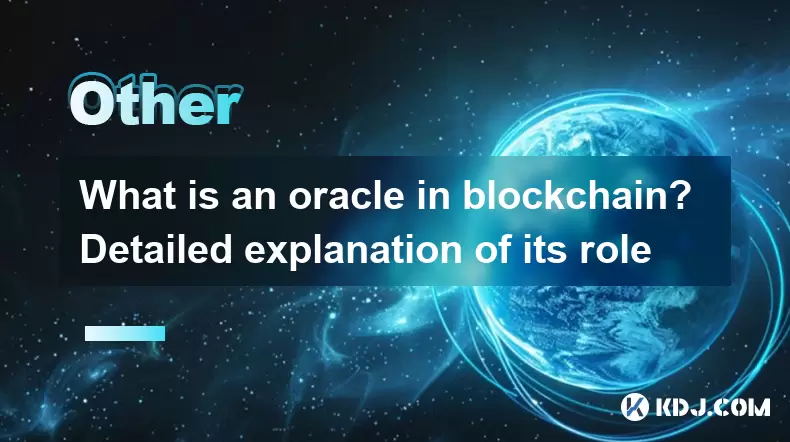
What is an oracle in blockchain? Detailed explanation of its role
Jun 21,2025 at 06:14am
Understanding the Concept of an Oracle in BlockchainIn the realm of blockchain technology, an oracle is a trusted third-party service that connects smart contracts with real-world data. Smart contracts are self-executing agreements where the terms are written directly into code and run on a blockchain network. However, these contracts operate in a close...
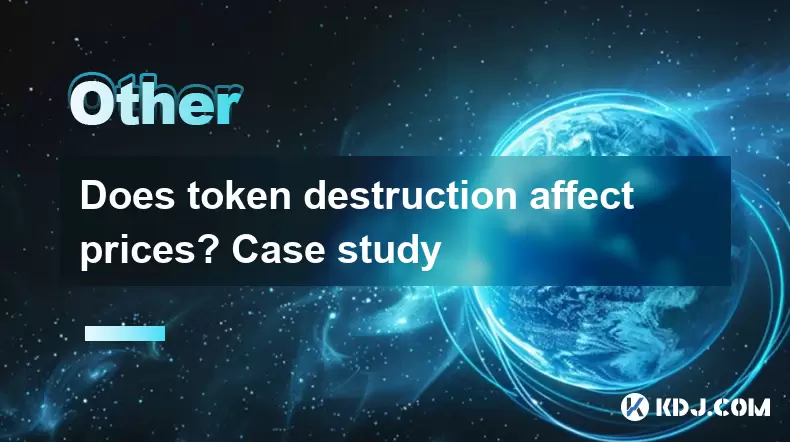
Does token destruction affect prices? Case study
Jun 22,2025 at 02:50am
Understanding Token DestructionToken destruction, commonly referred to as token burning, is a process where a portion of cryptocurrency tokens is permanently removed from circulation. This is typically done by sending the tokens to a non-recoverable wallet address, effectively reducing the total supply. Projects may implement token burns to create scarc...
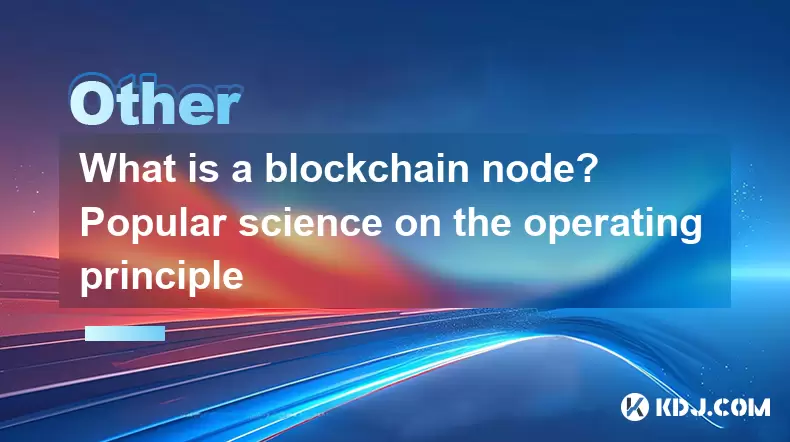
What is a blockchain node? Popular science on the operating principle
Jun 22,2025 at 11:00pm
Understanding the Basics of a Blockchain NodeA blockchain node is essentially a computer connected to a blockchain network that participates in validating and storing transaction data. Each node plays a critical role in maintaining the integrity, transparency, and decentralization of the blockchain. Unlike traditional centralized systems where a single ...
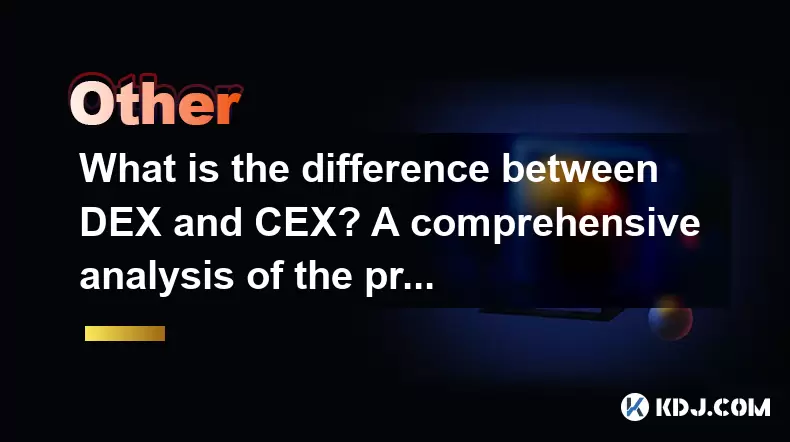
What is the difference between DEX and CEX? A comprehensive analysis of the pros and cons
Jun 24,2025 at 09:42am
What is a DEX (Decentralized Exchange)?A DEX, or Decentralized Exchange, operates without a central authority. Unlike traditional platforms, DEXs allow users to trade cryptocurrencies directly from their wallets. These exchanges rely on smart contracts to facilitate transactions, ensuring that no intermediary holds user funds. One of the most notable fe...
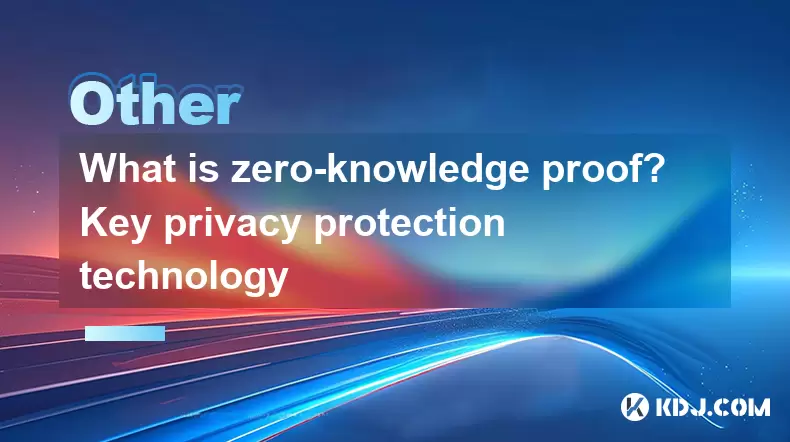
What is zero-knowledge proof? Key privacy protection technology
Jun 22,2025 at 07:29pm
Understanding Zero-Knowledge ProofZero-knowledge proof (ZKP) is a cryptographic method that allows one party to prove to another party that they know a value or information without revealing the actual content of that information. This concept is particularly important in the realm of privacy protection technologies, especially within blockchain and cry...
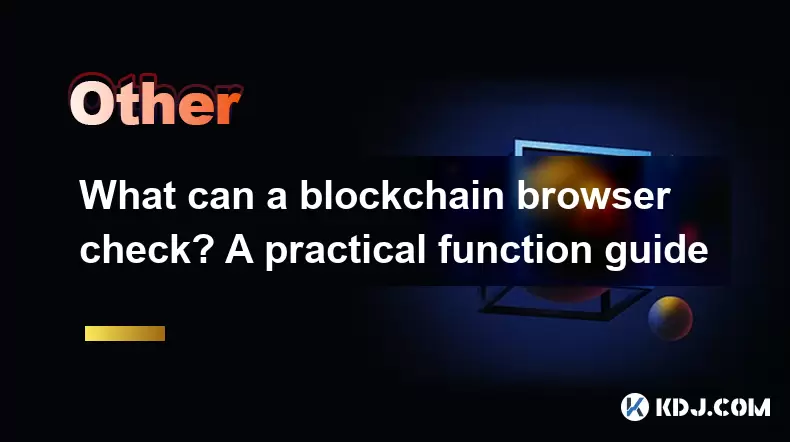
What can a blockchain browser check? A practical function guide
Jun 20,2025 at 07:35pm
Understanding the Role of a Blockchain BrowserA blockchain browser serves as a powerful tool for anyone interacting with blockchain networks. It allows users to explore, verify, and analyze data stored on the blockchain in real time. Unlike traditional ledgers or databases that are centralized, blockchains are decentralized and publicly accessible. This...

What is an oracle in blockchain? Detailed explanation of its role
Jun 21,2025 at 06:14am
Understanding the Concept of an Oracle in BlockchainIn the realm of blockchain technology, an oracle is a trusted third-party service that connects smart contracts with real-world data. Smart contracts are self-executing agreements where the terms are written directly into code and run on a blockchain network. However, these contracts operate in a close...

Does token destruction affect prices? Case study
Jun 22,2025 at 02:50am
Understanding Token DestructionToken destruction, commonly referred to as token burning, is a process where a portion of cryptocurrency tokens is permanently removed from circulation. This is typically done by sending the tokens to a non-recoverable wallet address, effectively reducing the total supply. Projects may implement token burns to create scarc...

What is a blockchain node? Popular science on the operating principle
Jun 22,2025 at 11:00pm
Understanding the Basics of a Blockchain NodeA blockchain node is essentially a computer connected to a blockchain network that participates in validating and storing transaction data. Each node plays a critical role in maintaining the integrity, transparency, and decentralization of the blockchain. Unlike traditional centralized systems where a single ...

What is the difference between DEX and CEX? A comprehensive analysis of the pros and cons
Jun 24,2025 at 09:42am
What is a DEX (Decentralized Exchange)?A DEX, or Decentralized Exchange, operates without a central authority. Unlike traditional platforms, DEXs allow users to trade cryptocurrencies directly from their wallets. These exchanges rely on smart contracts to facilitate transactions, ensuring that no intermediary holds user funds. One of the most notable fe...

What is zero-knowledge proof? Key privacy protection technology
Jun 22,2025 at 07:29pm
Understanding Zero-Knowledge ProofZero-knowledge proof (ZKP) is a cryptographic method that allows one party to prove to another party that they know a value or information without revealing the actual content of that information. This concept is particularly important in the realm of privacy protection technologies, especially within blockchain and cry...

What can a blockchain browser check? A practical function guide
Jun 20,2025 at 07:35pm
Understanding the Role of a Blockchain BrowserA blockchain browser serves as a powerful tool for anyone interacting with blockchain networks. It allows users to explore, verify, and analyze data stored on the blockchain in real time. Unlike traditional ledgers or databases that are centralized, blockchains are decentralized and publicly accessible. This...
See all articles

























